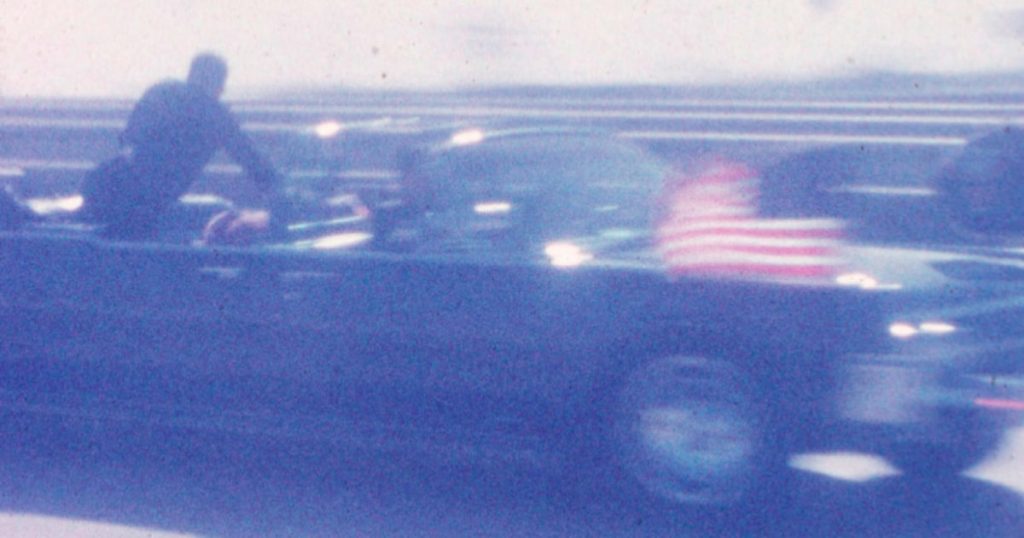Newly released film footage of President John F. Kennedy’s motorcade speeding towards a hospital after he was fatally wounded was sold at auction for $137,500. The 8 mm color home film captured the aftermath of the assassination on November 22, 1963, and was recorded by Dale Carpenter Sr., who just missed filming the limousine carrying Kennedy and first lady Jacqueline Kennedy. The film depicts other vehicles in the motorcade as it traveled down Lemmon Avenue towards downtown Dallas before picking up after Kennedy had been shot as the motorcade rushed down Interstate 35.
As the motorcade passed through Dealey Plaza in front of the Texas School Book Depository, where Lee Harvey Oswald had positioned himself on the sixth floor, shots were fired. Carpenter’s footage from I-35, lasting about 10 seconds, shows Secret Service Agent Clint Hill standing over the president and Jacqueline Kennedy, who was wearing a pink suit. Kennedy was pronounced dead upon arrival at Parkland Memorial Hospital. The film, with a gripping sense of urgency and heartbreak, was kept by Carpenter’s family until it was eventually passed on to his grandson, James Gates.
Gates, who projected the film onto his bedroom wall around 2010, was initially underwhelmed by the footage from Lemmon Avenue. However, the footage from I-35 played out before his eyes, shocking him with its intensity. The auction house, RR Auction in Boston, released still photos from the film but has chosen not to publicly release the video of the race down I-35. The buyer of the film remains anonymous, but Bobby Livingston, the executive vice president of RR Auction, emphasized the historical significance of the footage in providing a firsthand look at the events following Kennedy’s assassination.
The film highlights the chaos and tragedy of the immediate aftermath of the assassination, offering a rare glimpse into the historic event that shook the nation. While the assassination itself was famously captured on film by Abraham Zapruder, Carpenter’s footage adds another layer of detail to the events of that fateful day. The auction of the film generated significant interest and was ultimately purchased for a substantial amount, reflecting the enduring public fascination with the Kennedy assassination and the historical importance of preserving such artifacts.
The emotional impact of the footage is evident in the reactions of those who have viewed it, with Gates expressing his shock upon seeing the scenes captured by his grandfather decades ago. The film serves as a poignant reminder of the tragic events of November 22, 1963, and the lasting impact they had on American history. By preserving and sharing this footage, Carpenter’s family has contributed to the ongoing dialogue surrounding Kennedy’s assassination and its place in the collective memory of the nation.
Overall, the sale of the film at auction represents an opportunity to engage with history in a tangible and visceral way, offering a window into a pivotal moment in American political and cultural life. The significance of the footage lies not only in its historical value but also in its ability to evoke strong emotions and prompt reflection on the enduring legacy of John F. Kennedy and the impact of his assassination on the nation. As the film continues to be studied and analyzed by historians and the public alike, its importance as a primary source of information on that tragic day will only grow.


